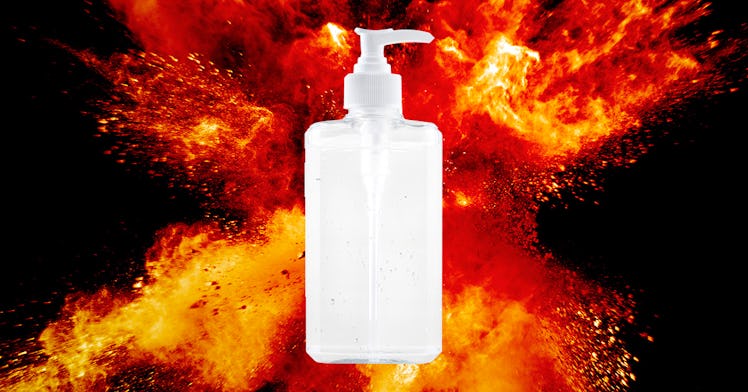Can Hot Hand Sanitizer Actually Blow Up Your Car?
One fire department issued a shocking PSA. But is it legit?

Early yesterday morning, the Western Lakes Fire Department in Wisconsin did one of the things a good fire department does: issue a topical warning designed to educate people about fire safety. After noting that alcohol-based hand sanitizers are flammable, the Facebook post makes a claim that’s might not be all that correct.
“Keeping it in your car during hot weather, exposing it to sun causing magnification of light through the bottle…can lead to disaster.”
It is technically possible, if everything lines up just so, for any clear bottle containing a clear liquid to start a fire in a car. But it’s highly unlikely, and it won’t happen if you keep clear bottles in a shady spot.
The post also notes that “most hand sanitizer is alcohol-based and therefore flammable,” which is true but seems to imply that in and of itself it’s a dangerous material to store in your car, that if you leave a bottle of Purell in the cupholder while grocery shopping you could come back to find your minivan torched.
That’s…kind of a stretch. The Poynter Institute cited fact-checkers in Brazil who found that a car would need to reach an internal temperature of over 572 degrees Fahrenheit to cause hand sanitizer to combust and a study out of Arizona State University that found that cars parked 100 degree-plus heat only reached temperatures of about 160 degrees.
The National Fire Protection Association says that while technically possible, firefighters should only really worry about “large quantities” of at least five gallons posing a fire risk. A firefighter friend of mine said that you only need to worry about hand sanitizer bursting into flame “if you had a 55-gallon clear drum sitting in the sun in Death Valley.”
That’s a bit hyperbolic, but it does drive home the point that you really don’t need to worry about leaving a non-industrially sized bottle of hand sanitizer in your car.
This article was originally published on